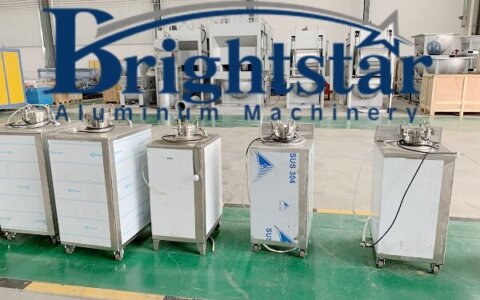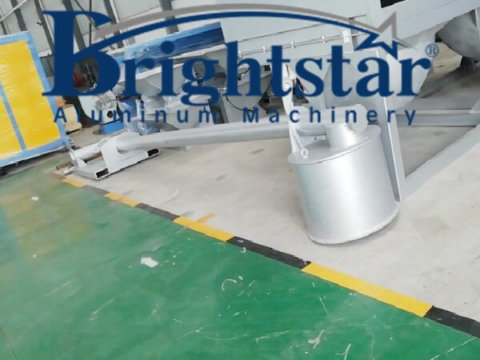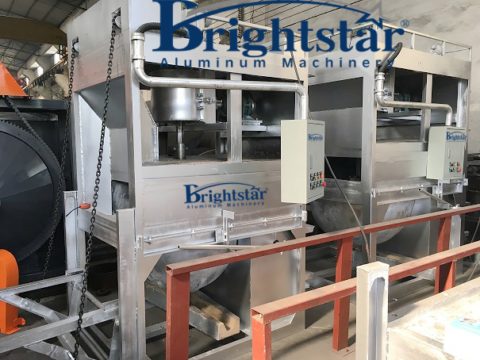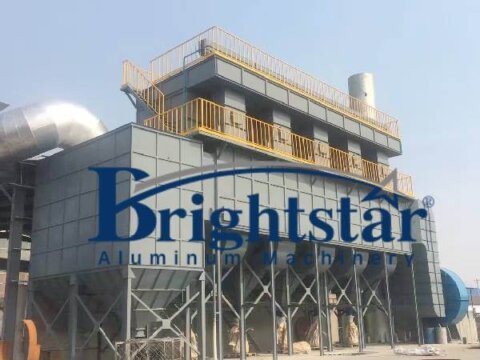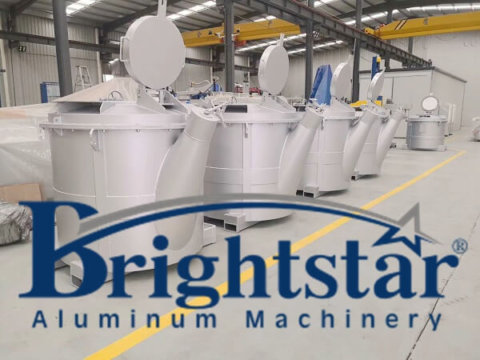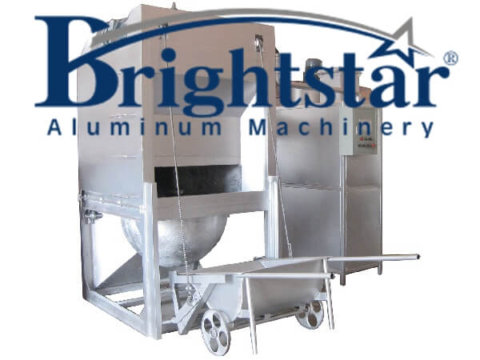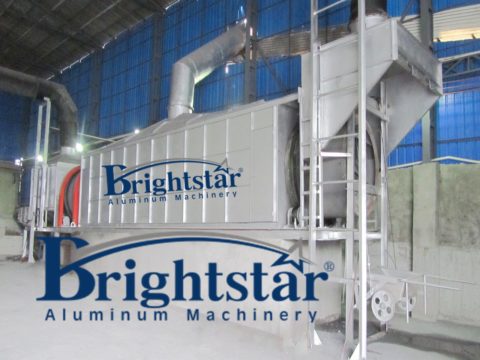
Flux feeder in aluminium melting
Flux feeder in aluminium melting
A Flux feeder in aluminum melting plays a crucial role in ensuring the cleanliness and quality of molten aluminum.
It continuously feeds flux, a specialized chemical compound, into the molten metal during the melting process.
What is flux feeder and its function?
Flux feeder in aluminum melting can be used for wrought aluminum and aluminum alloy refining through the auxiliary materials will be fed into molten aluminum evenly by frequency conversion and refining gas, which can remove the oxide inclusions and hydrogen effectively from the melting.
Stainless steel container can be loaded with 20kgs refining agent. Evenly exhausting can improve aluminum log quality and working efficiency.
This flux performs several vital functions:
Function:
Removes oxides and impurities: Flux reacts with the oxides and other impurities formed during melting, causing them to rise to the surface as slag. This cleanses the molten aluminum and prevents them from impacting the final product quality.
Controls fluidity and viscosity: Flux can alter the viscosity of the molten aluminum, making it flow more smoothly and improving casting characteristics. This can lead to better casting precision and reduced casting defects.
Protects from oxidation: While the furnace atmosphere and other protective measures play a role, flux also helps prevent further oxidation of the molten aluminum during the melting process.
Reduces gas formation: Flux can react with dissolved gases in the aluminum, promoting their release and minimizing the formation of gas bubbles that can weaken the final product.
Features:
Controlled feeding mechanism: The feeder ensures a consistent and regulated supply of flux to the molten metal, preventing over- or under-fluxing.
Adjustable dosage: Different furnaces and melting conditions require varying amounts of flux. The feeder allows for preciseness in adjusting the flux dosage for optimal results.
Heat-resistant design: The feeder must withstand the high temperatures of the melting environment, so it’s constructed from durable and heat-resistant materials.
Safety features: Some feeders incorporate safety measures like automatic shut-offs or alarms to prevent potential hazards associated with handling molten metal and hot flux.
Advantages:
Improved aluminum quality: Cleaner and more consistent molten aluminum leads to higher quality final products with fewer defects and improved performance.
Enhanced casting results: Improved flow and reduced gas formation contribute to smoother casting processes and fewer casting defects.
Increased casting yield: By minimizing metal loss due to oxidation and impurities, flux feeders can potentially increase the overall yield of the melting process.
Reduced operational costs: Cleaner furnaces and fewer casting defects can lead to lower maintenance costs and less downtime.
Environmental benefits: Flux can help reduce energy consumption during melting and often contains recycled materials, contributing to a more sustainable aluminum production process.
Flux feeder application
Suitable for the wrought aluminium and aluminium alloy degassing and refining, can effectively remove oxide inclusion and hydrogen from the molten aluminum.
Flux feeder technical data
Main machine
Control system (Nitrogen transfer and control, electronic control and Alarm system)
Environmental requirement
Flat and smooth ground and enough space
Not too much air humidity
Overall dimension: L700mm W400mm H900mm
Speed regulating: frequency converter
Main tank: 304 stainless steel tank
Capacity: 20kgs-40kgs
Flux feeder using method
Add the refining agent to the refining machine on the basis 1.5-2.5kgs refining agent per ton molten aluminium, cover the top cap.
When the molten aluminum temperature is 700-740℃, turn on the refining machine, import nitrogen (the nitrogen pressure should be 1.2-1.8kg/cm2).
When the refining tube starts to spray the refining agent, then the tube can be inserted into the molten pool and move slowly and evenly.
High purity nitrogen will blow the powder refining agent into the molten aluminum.
Under the combined effect of diffused small air bubbles and refining agents, the oxide inclusion and hydrogen will be removed.
The refining time is about 15-25 minutes.
When the refining agent in the tank is done, draw out the refining tube and close the nitrogen.
Flux feeder is widely used in aluminum melting, can be used for different production capacity melting furnace.
Overall, a Flux feeder is a valuable investment in aluminum melting operations.
Its ability to improve aluminum quality, enhance casting results, and offer various other advantages makes it an essential tool for anyone seeking to optimize their aluminum melting process and achieve superior final product quality.
